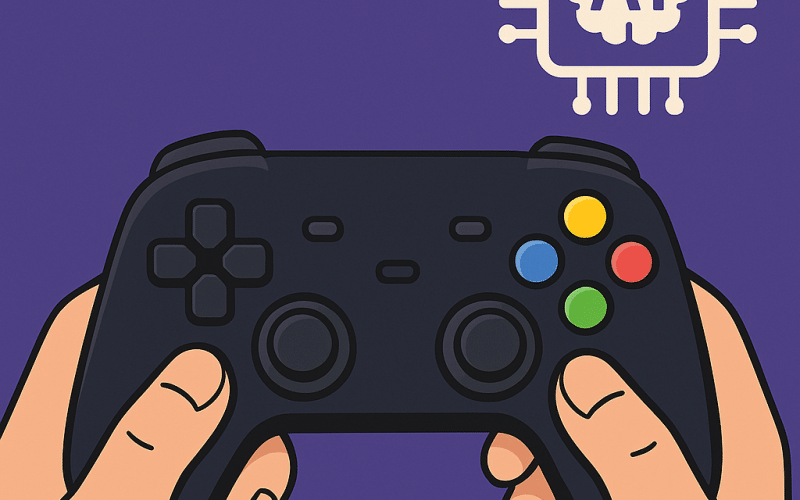
Artificial intelligence is no longer science fiction in the classroom – it’s here, and it’s game on. Across middle and high schools, AI-powered gaming in education is engaging students and personalizing lessons like never before. Over half of educators surveyed in 2023 said AI in education has already improved teaching and learning outcomes. As schools explore gamification in classrooms, especially for students aged 12 and up, they are seeing both promising results and new questions.
This article takes a close look at the documented benefits of AI-powered gaming for educational purposes, how these games work, real examples in secondary education, expert opinions, skepticism, and the global status of adoption.
Documented Benefits of AI-Powered Gaming in Education
AI-powered gaming in education boosts student achievement and engagement. A study by Knewton found that students using their AI-powered math platform improved test scores by 62% compared to peers. Carnegie Learning’s Cognitive Tutor showed notable score jumps after two years of use. Games like Prodigy reported improved math outcomes across multiple districts.
These games offer:
- Adaptive learning: Content adapts in real time to student performance.
- Increased motivation: Gamification elements like rewards and challenges keep students involved.
- Instant feedback: AI provides immediate correction, helping students learn from mistakes on the spot.
- Personalized pacing: Games adjust difficulty levels to meet learners at their level.
- Skill development: Beyond academics, games improve persistence, problem-solving, and critical thinking.
How AI Works in Educational Games
AI integration powers intelligent tutoring, adaptive feedback, and personalized content. It enables:
- Real-time adjustments in difficulty and content focus.
- Intelligent tutoring systems that offer hints, explanations, or supplemental practice.
- Data dashboards that help teachers track individual and class-wide progress.
- Game narratives and AI-powered NPCs for deeper engagement.
Duolingo, for example, adapts language tasks on the fly, while MATHia mimics a human tutor using cognitive science models.
Real-World Examples of AI-Powered Gaming in Education in the Classroom
- MATHia (Carnegie Learning): Widely used for high school algebra. Personalized feedback and problem sequencing.
- Knewton Alta: Gamified adaptive learning in math and science.
- Duolingo: Used for language learning with adaptive AI algorithms.
- Minecraft: Education Edition: Custom coding and AI scenarios for science and history.
- Quizizz and Kahoot!: Now include AI to generate adaptive quizzes and measure student performance in real time.
Global Gaming Demographics: Teen Gamer Trends
Understanding the teen gaming population offers the opportunity for educational integration. Here’s a breakdown based on data for the EU, USA and ASIA:
EU (Major Markets, 2022)
| Age | Male Gamers (millions) | Female Gamers (millions) |
|---|---|---|
| 12 | 1.8 | 1.3 |
| 13 | 1.9 | 1.4 |
| 14 | 2.0 | 1.5 |
| 15 | 2.1 | 1.5 |
| 16 | 2.1 | 1.6 |
| 17 | 2.1 | 1.6 |
| 18 | 2.0 | 1.5 |
USA (Pew, 2023)
| Age | Male Gamers (millions) | Female Gamers (millions) |
| 12 | 1.9 | 1.4 |
| 13 | 2.0 | 1.5 |
| 14 | 2.0 | 1.5 |
| 15 | 2.1 | 1.5 |
| 16 | 2.1 | 1.6 |
| 17 | 2.1 | 1.6 |
| 18 | 2.0 | 1.4 |
Asia (2024 Estimates)
| Age | Male Gamers (millions) | Female Gamers (millions) |
| 12 | 17 | 10 |
| 13 | 18 | 11 |
| 14 | 19 | 11 |
| 15 | 19 | 11 |
| 16 | 19 | 11 |
| 17 | 19 | 11 |
| 18 | 18 | 10 |
Expert Opinions and Research Insights
Educators, researchers, and developers agree on the potential of AI games, while urging careful use:
- Teachers report higher motivation and stronger performance among students using adaptive games.
- Researchers cite evidence of improved learning and retention in AI-enhanced environments.
- EdTech developers focus on inclusive design, non-competitive game modes, and privacy-by-design practices.
- Policymakers highlight the need for ethical guardrails and data protection.
Doubts and Limitations
Despite optimism, experts raised several concerns:
- Motivation mismatch: Competitive formats may demotivate some learners.
- Cheating potential: AI hints or bots might enable shortcutting learning.
- Reduced social interaction: Overuse could limit peer collaboration and emotional learning.
- Bias and inequality: Students in under-resourced areas may lack access to devices or adaptive platforms.
- Transparency gaps: Many AI systems operate as “black boxes,” making it hard to audit decision logic.
Adoption Trends and Future Outlook
AI-powered games are expanding rapidly:
- Over 60% of U.S. teachers have integrated AI tools, often in the form of educational games.
- Investment in AI EdTech is projected to surpass $20 billion by 2027.
- Gamified learning is spreading globally, especially through mobile-first platforms.
- Future developments include AI-generated narratives, immersive VR learning, and global multiplayer classrooms.
Thoughtful Design, Teacher Support, and Ethical Oversight
AI-powered gaming in education is already transforming education for teenagers. From boosting scores to fostering curiosity, its benefits are tangible. But thoughtful implementation is critical.
- Thoughtful design ensures educational games are inclusive, motivating, and pedagogically sound.
- Teacher support provides the human connection, guidance, and oversight that no algorithm can replace.
- Ethical oversight guarantees that the technology respects student privacy, avoids bias, and contributes to equity.
If these three pillars are in place, AI-powered gaming in education won’t just entertain or engage – they’ll empower. The students are ready. The tech is ready. Now it’s time to build the learning environments they deserve.
